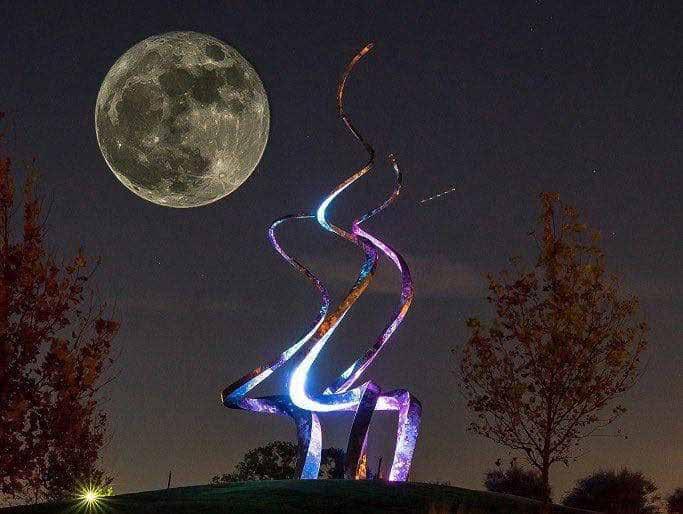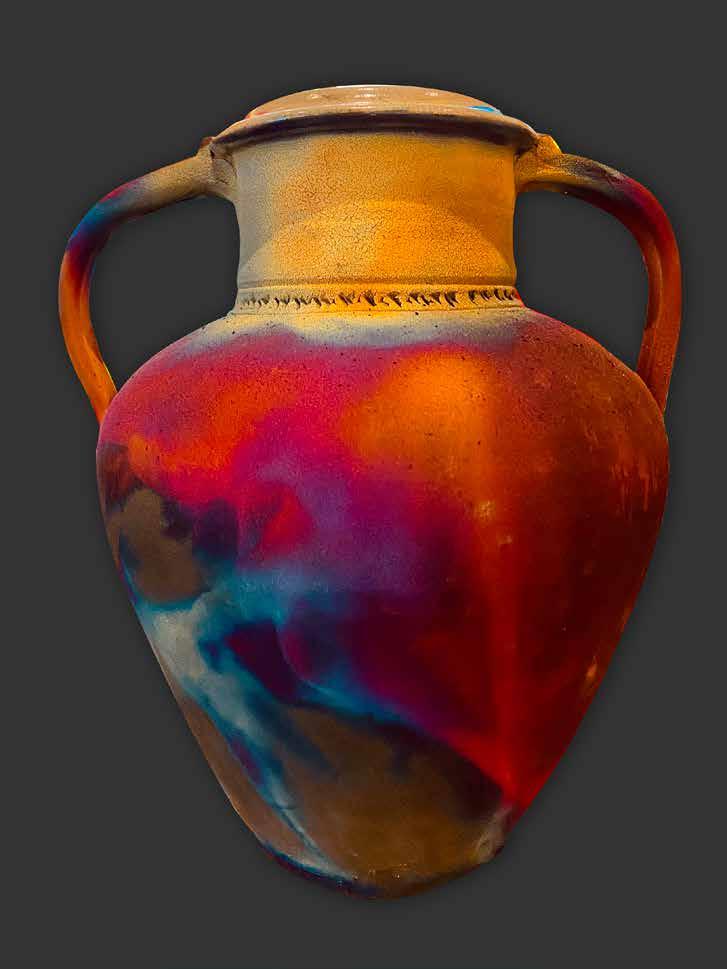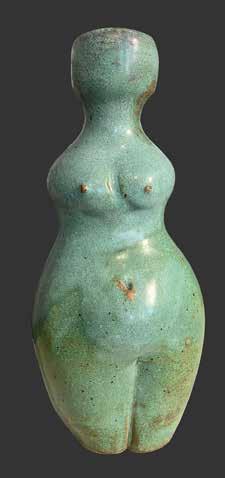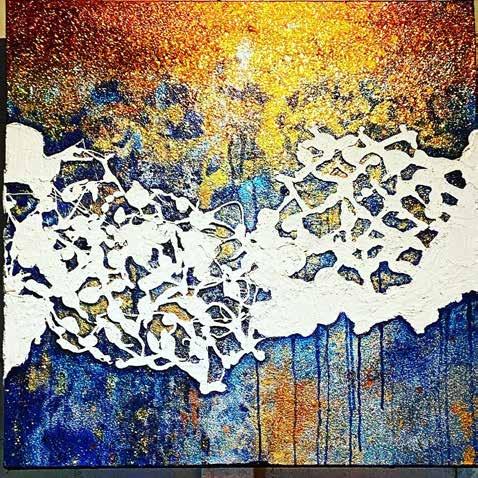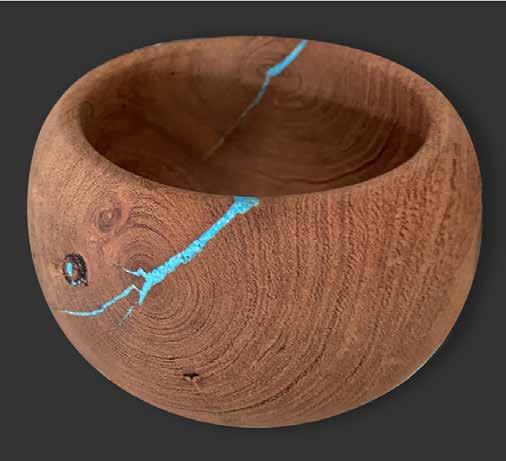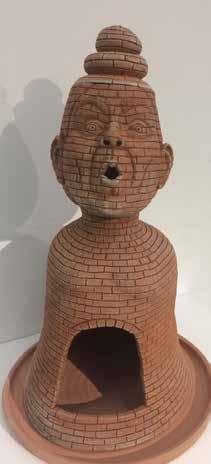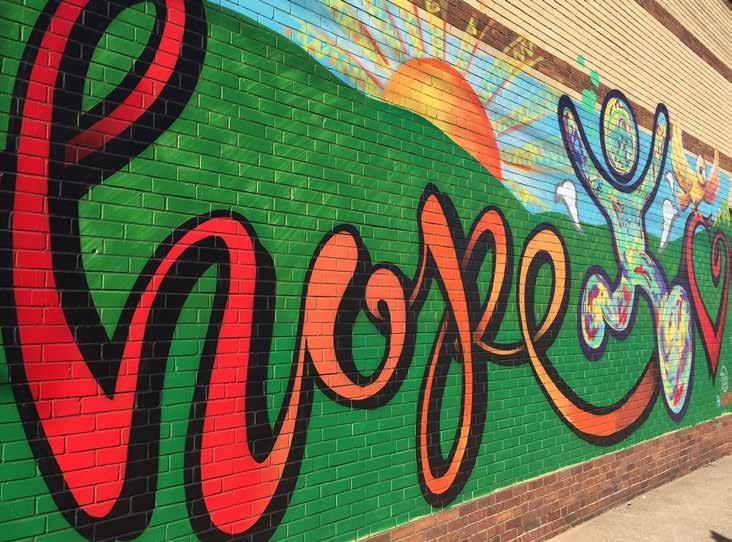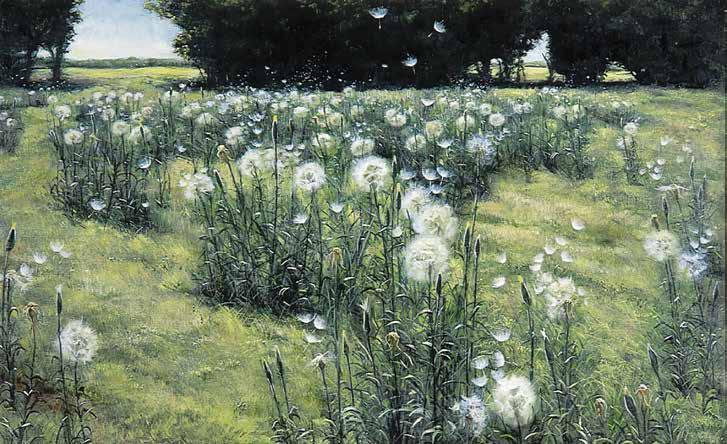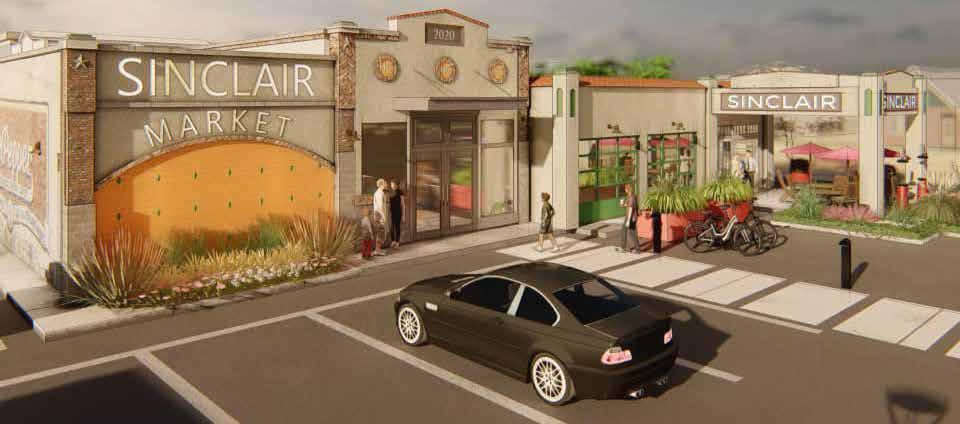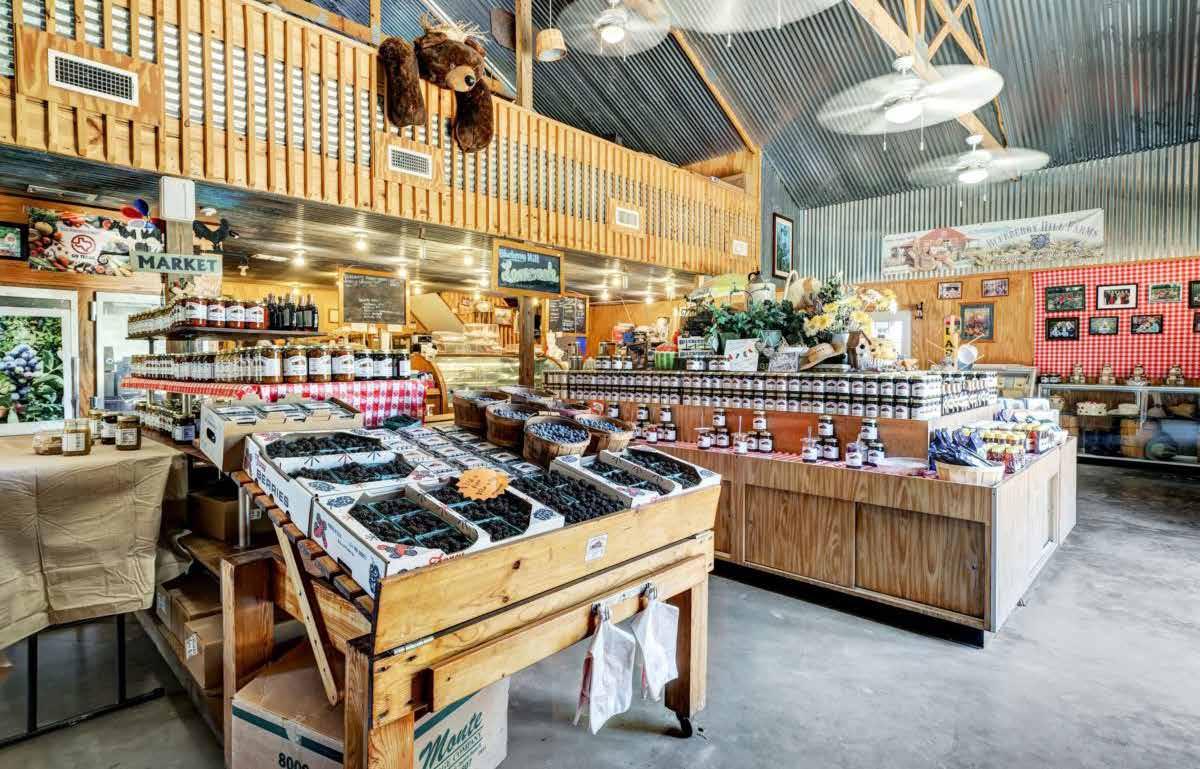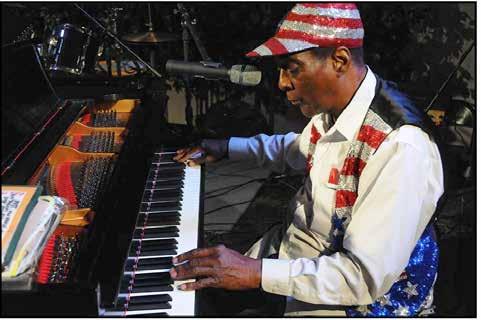
4 minute read
Edom Art Emporium
Edom Art Emporium packs an eclectic selection of art by area artists into their little shop located in a renovated old gas station in downtown Edom, Texas.
Three artists head up operations of the emporium — soapmaker Trystan Rhys, painter Kerian Massey, and metal sculptor Randy Martin.
They have a large gallery, a showcase room for smaller fine items and a full pottery and art studio. They hold class es in a variety of mediums including creating copper lilies, leaves or water fountains; pottery, vases, and mugs; basic and advanced illustration, water color and acrylic painting and scratchboarding; soapmaking; and succulent care and arrangements. Other classes in the works include jewelry making, stained glass, sculpting, weaving, knit ting, sewing, and creative workshops.
Here is a sampling of the artists and their works found at Edom Art Empo rium. See more in a slideshow on www. countylinemagazine.com. To purchase and learn more about the emporium, go to www.edomartemporium.com or call (903) 714-7414.
Kerian Massey’s “Peacemobile” is fea tured on the cover of this issue. She is a graphic artist and illustrator by trade but puts brush to canvas whenever an idea sparks in her mind. She wants the viewer to be a part of her work, pull ing their own feelings and history out from its depths. Her work is as weird and eclectic as she is, covering animals, cars, chairs, shoes, people and funky ideas. Her take on the normal items gets bent by her love of surrealism and imagery, bringing the viewer on a small visual adventure.
“There is a sense of freedom in creat ing something, no real rules, except for the ones you abide by, “Massey says. With each painting her definition as an artist gets deeper and more compli cated. You get to see small pieces of her heart embedded into each canvas. It’s her favorite form of extroversion with out ever saying a word. bine a love for helping others with a love for artistic expression.
“Recognizing that color is important in the food we eat; the clothes we wear; our homes; our cars; and even our pets,” Howard says, “I like to point out that there is a great deal more to col or than what meets the eye because it communicates.”
Pictured opposite page bottom right is a sculpture by Nic Noblique. Growing up immersed in the punk rock, skate board and snowboard culture of the Midwest, Nic’s passion for art and de sign has led to over a decade and a half of notable achievements, installations, competitions and exhibitions.
On page 32 is one of Les Mitchell’s pieces. Mitchell studied basic pottery techniques at Booker T. Washington School of the Arts in Dallas. After graduation, he developed his wheel throwing skill while apprenticing un der Michael Obranovich, a specialist in functional stoneware. He then con centrated on Raku while working with Randy Brodnax, a teacher in investiga tional techniques in pottery. His work is exhibited in shows and galleries throughout the country.
Page 33 features four artists. Starting top left and going clockwise, here they are.
“Goddess” is by Lori and Dan Dudley. The Dudleys have collaborated in art since they met in 1988.
They first enjoyed hours together water coloring handmade Christmas cards for friends and family. Dan designed props for theme parties while Lori dec orated show rooms at the World Trade Center and each would assist the other.
Dan’s love for cartooning soon turned into an animation business and Lori became project manager for Dan Dud ley Cartoons which they co-owned for 11 profitable years. Meanwhile Lori studied massage therapy and rediscov ered clay, a skill from her 20’s in West Virginia. State University where she discovered her knack for design and painting in her scene design classes. She works primarily in abstract using acrylic and found materials on canvas. Her work explores a philosophical quest for won der and meaning and a search for the truth within the facade.
Latham is also an experienced mural ist, illustrator and giant puppet builder. More recently, she curated the Storybook Attic Exhibit in conjunction with the International Children’s Literature Festival for the Center for Contempo rary Art in Abilene, Texas. Currently, she is working on a public art project in bringing more than 50 new murals to her rural hometown of Munday, Texas.
The chiminea is by Mary Long. She is a potter and ceramic sculptress origi nally from the Dallas area. Mary moved to Murchison after retiring in 2018 to pursue working as a full-time artist af ter teaching in both Garland and Mesquite ISD as an art teacher. Currently she is an Educational Consultant for Garland ISD teachers. Mary loves to combine hand building techniques and altered wheel thrown shapes.
Her work most recently has shown in The Best of Texas Clay Show (Texas Sculpture Association), The ASH In ternational Art show, and the Art 39 Show at Texas A&M Commerce.
The Mesquite wood bowl is by Mike Tate who got involved with wood turn ing after retirement. “I have always been attracted to woodworking activity but never really got involved in ‘cre ative’ woodworking until after retirement,” he says.
Most of the wood he uses comes from trees in the local area brought down in storms, taken down by homeowners or just died of some cause.
“I think there is something almost magical in being able to take a chunk of nondescript wood and turning it into a thing of beauty,” he says. “Wood turning is a never-ending process of trial, error and learning.”
